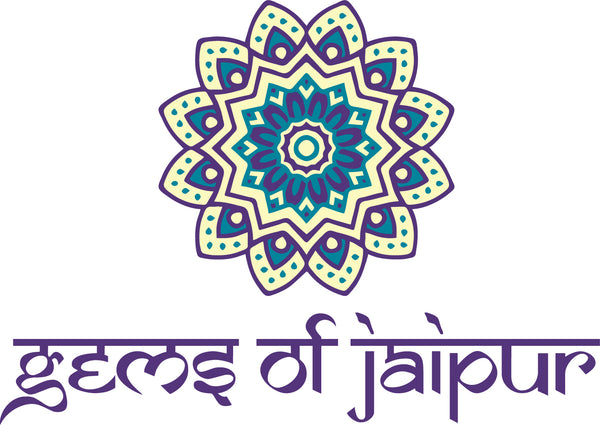Posted on July 05 2023

The Mangalsutra, a pendant necklace known as the "auspicious thread," holds immense significance in Hindu weddings. Over the years, it has become a symbol of marital unity and a reflection of evolving fashion trends.
The Sacred Thread
The concept of a "sacred thread" in Indian marriage ceremonies dates back centuries. Initially, it was a simple white woven cord dipped in turmeric, believed to bestow its antibiotic properties on women, especially during childbirth. However, the influence of European customs and changing lifestyles gradually transformed the white cord into elegant gold jewelry, giving rise to the Mangalsutra we know today.
Anatomy of a Mangalsutra
A typical Mangalsutra consists of a chain adorned with gold and black beads, ranging from 16 to 34 inches in length, and features a pendant. The design and motifs of the necklace vary across regions and communities in India. For instance, Maharashtra (a state in the west, Mumbai is the capital) often incorporates two dangling hollow gold balls representing the union of two families. At the same time, Tamil Nadu (a state in the southeast, Chennai is the capital) frequently includes a gold thaali (medallion) depicting the couple's family deity.
Besides a symbol of marriage, Hindu women always wear this necklace because they believe it will give their husbands the ability to live a long life and die a sumangali (a respectable married woman). There are three knots tied in it. The groom ties the first knot, which signifies the couple's commitment and assures the bride's well-being. The second and third knots are tied by the groom's sister, representing the commitment between the two families.
Fashion and Design
While the Mangalsutra holds deep-rooted traditions, it is not immune to fashion trends. Contemporary Indian brides, particularly the younger generation, are embracing more petite and stylized versions of the necklace. Flashy Mangalsutras still have their admirers, but motifs like hearts, evil eyes, solitaires, and geometric shapes are gaining popularity. Brides are also customizing designs to suit their modern wardrobes, adding a touch of personalization to their bridal jewelry.
Beyond the Mangalsutra
In addition to the Mangalsutra, other traditional adornments like the gold belt and silver anklets hold cultural significance in Indian weddings. The gold belt, known as "Kamarbandh," is worn around the waist, accentuating the bride's attire and symbolizing femininity and grace. Silver anklets, or "Payal," create a melodious rhythm as the bride walks, signifying her entry into a new phase of life. These accessories add charm and beauty to the bride's ensemble while upholding age-old customs. One lady told me that using silver at the feet and gold at the waist allows the energy to meet at the womb, opening it for welcoming children.
Modern Interpretations
While the Mangalsutra continues to be cherished by many, there are differing viewpoints on its symbolism. Some modern brides tweak traditional designs to align with their contemporary wardrobes and lifestyles. On the other hand, a few individuals have even discarded the notion of wearing a Mangalsutra, perceiving it as a symbol of subjugation. However, interpretations and perspectives surrounding the Mangalsutra vary across India, with urban and rural regions often showcasing contrasting sentiments.
Personalization and Versatility
As fashion evolves, the Mangalsutra is adapting to meet the desires of modern brides. Customization options now include zodiac signs, solitaires, and trendy motifs like hearts and infinity symbols. Brides are seeking pieces that not only represent marital unity but also align with their personal style. This desire for subtlety and versatility has given rise to Mangalsutra bracelets and delicate chains that can be effortlessly stacked with everyday accessories.
Preserving Symbolism in Contemporary Times
For those who embrace tradition while also desiring adaptability, the modern Mangalsutra strikes a perfect balance. Brides like Eshaa Amiin choose designs that match their non-ethnic outfits while staying true to the symbolic meaning of the Mangalsutra. By opting for stackable bracelets and delicate chains, they fuse tradition with contemporary fashion, allowing them to express their individuality while honoring the legacy of the Mangalsutra.
Preserving Cultural Heritage
In an era of globalization and increasing cultural exchange, the significance of the mangalsutra extends beyond Indian borders. With the Indian diaspora spread across the globe, the mangalsutra is a tangible link to their roots and a unifying symbol of shared cultural identity. Indian women residing in various parts of the world continue to embrace the mangalsutra as a cherished piece of jewelry, a testament to their heritage, and a means of connecting with their cultural traditions.
Furthermore, the popularity of Indian weddings and fusion celebrations has led to the mangalsutra gaining attention and admiration worldwide. Non-Indian brides increasingly incorporate elements of the mangalsutra into their wedding jewelry, appreciating its beauty and symbolism. This cross-cultural exchange not only highlights the allure of Indian traditions but also contributes to the global appreciation and understanding of diverse cultural practices.
Final Words
The Mangalsutra's journey from a humble white thread to an exquisite piece of jewelry showcases the dynamic nature of Indian culture and fashion. As societal norms evolve, the Mangalsutra has gracefully adapted, appealing to the preferences of modern brides. Whether traditional or customized, this cherished symbol holds deep significance, reflecting the eternal bond of marriage. Through the centuries, the Mangalsutra has adorned brides and woven a rich tapestry of tradition, style, and cultural heritage.
While we do not carry Mangalsutras in our collections, we have had a few made for our customers. I love mine I bought on my first trip in 2005 and continue to wear it today. If you are interested, let’s talk!

0 comments